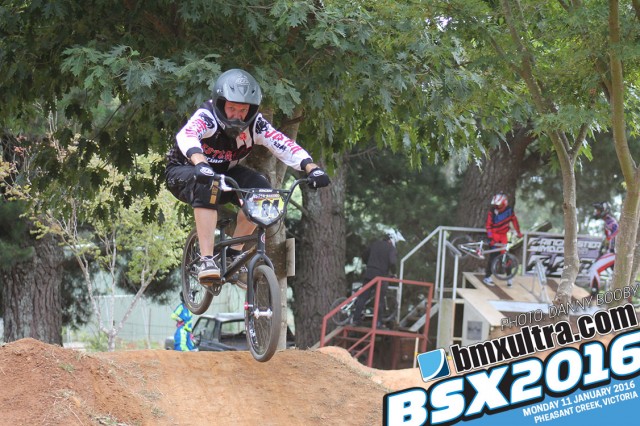Bruce’s Training Tips For Grown Up and Time Poor
Training for racing when you grow up, have a job, and a life outside of BMX
Apparently not everyone has unlimited time for training during the week for their racing! This is especially true for most of us past the age of 35 trying to balance our life that can be full of work, kids and family obligations. Plus you might also volunteer for your local BMX club in some capacity (massive props to you) restricting the amount of time you can get on a bike, or train/exercise in any shape or form. In a previous article I wrote about gym time versus bike time and showed how you can use a BMX bike to improve your cardiovascular fitness. This time I’m going to look at getting the best racing results with limited time to train. In other words, prioritising your training to get the most out of your bike/body so that you don’t get frustrated on club nights, or open days. It’s a common complaint I hear a lot in the 40+ classes, that “I” don’t get enough time to train and my results suck because of it.

While this article is pertinent for those racing in the 35+ classes, the principals I’m applying are drawn from basic training methodologies. The difference being that BMX is a multi-skilled sport which requires you to negotiate a track containing high speed hills, jumps and 7 other racers of various skill levels who at times seem intent on killing you. Modern BMX tracks contain more jumps in one straight than 80s tracks had in total! So we are seeing injuries akin to running into a tree in your car at 50kp/h without your seatbelt on (an analogy used by the medical staff when my mate went to GC University Hospital a few weeks back), getting around in one piece can be a challenge in itself.
But despite these risks, we love racing and it can be done successfully, even with limited training time. You just need to make your sessions count. The common theme you can see emerging is skill development. With acknowledgement to Qld coach Brendan Abel, skill under fatigue is the key component to get you around a modern track. Training this aspect though is fraught with danger if you decide to run some intense intervals on a track like Sleeman’s third straight. You need to build up to this level.
However, we’re getting ahead of ourselves. Let’s break down the various physiological components required to race BMX.
- Neuromuscular coordination – getting out of the gate, negotiating jumps
- Power and acceleration – drive down the start hill, 2nd through to 12th pedals
- Resistance to muscle fatigue throughout the lap – anaerobic training
- Core muscle endurance – the connection between your upper and lower body
Throw a rhythm straight into the mix at around the 20 second mark (typically the third straight) and if your track fitness isn’t up to scratch, landmines start to appear. That’s when anaerobic training becomes paramount. But without the basic skills in your tool kit to negotiate the various jumps/sections, you can be the strongest/fittest rider on the gate, but you’ll never win a BMX race. After all, this isn’t track racing.
So we face a conundrum. Let’s say you’ve been back racing for a year (after a break of 15 or 20 years), your gates are getting pretty good, and you can get around the track without firing off into the crowd like you’ve just run over a IED, but your results have stalled, or you’re ready to race some open days. With that limited time to train, you need to prioritise the components of BMX racing in order to improve your race results, or be better prepared for those new tracks you might encounter.
Do you need to develop more explosive power to get that elbow in front down the hill? Do you need to smash out track intervals in order to prevent muscle fatigue? Or practice getting dialling in the jumps? Where’s your time best spent?
Skill before speed is my adopted coaching mantra. Followed by developing skill under fatigue. Track time is essential though, and if your week only allows two sessions at the track, one gate night, and one night at a club race, then you need to make the most of time. Just because it’s “gate night”, it doesn’t mean that you just follow everyone up to the gate and smash out a million gates. Go with a plan, and for god sake, don’t go pedalling the whole first and second straight like you’re a machine when you are doing your gates. You need to conserve energy so that you can get the most out your date night. You aren’t 20 years old anymore people.
Sure you need a gate to be a half decent racer, but here’s my tip. Only accelerate to the bottom of the hill, and then shut it off. Like a top fueler there’s only a certain amount of nitro-methane in the tank and if you keep your efforts under 3 seconds, you can run these all night long. The only drawback is if your local gate night is (for example) Bathurst, then the roll to the bottom and walk back up will drain you. Try to pick a track with a moderate hill if you have a choice. It’s no secret that I’m a massive fan of my home track, Centenary Plains, here in Brisbane because of the low hill and solid 12 crank strokes before the first jump. It’s a massive advantage to develop drive over training on a 5m (or more hill, say Bundaberg for example).
Once you surpass 3 seconds, you start to dip into the ATP+CP system that requires metabolic activity to replenish the fuel stores (a good 5 min break if you want to repeat these efforts). If you’re training to improve your gate reaction time and acceleration, then shut it off by the first jump. Otherwise, you’re compromising the acceleration training and your repeated efforts will be of poor quality. Do a block of 5, rest for 5 mins, repeat two more times. That’s a total of 15 gates. Break, then let’s get out to the track.
Remember, you came here with a plan, so work on that section that gives you grief. For example the third straight at Sleeman. It’s a long rhythm straight so again, think about conserving energy. You’re here to work on your skills, not training for track endurance just yet. So attack the straight applying the skill you’re working with (pumping, manualing/jumping combos) and give yourself a good 5 min rest. You might get 5 or 6 runs in and once you bonk a couple of times, call it quits before someone has to call 000.
The next week, you might want to work on another section of the track. Say a typical second straight with a few bigger doubles. Same principal applies though. Gates in the format outlined above, then work on the track. Don’t always pick the section you’re comfortable with. Challenge yourself to work on the sections, jumps which give you some trouble. Sit there for a while and watch some of the gun kids around 12 to 14 years old run through the straight. They’re around our 35+ year old speed, or faster! You’ll a lot by observing their body position and how they approach the section. Stay loose! I can’t emphasise that enough.
These combo sessions are key to your racing improving. When you race your club night, you’ll naturally work on your track fitness. The ideal window is a minimum break of 8 minutes, and a maximum of 15. This is the sweet spot for developing more metres in your legs. As the crew I coach here in Bris Vegas implicitly know, it’s all about building a metre more into the legs every week to a point that you can drive out of the last corner without wondering if first aid have a defib on hand!
So that’s two track sessions a week, what else can you sneak in? Have a spare 30 minutes one afternoon and a 100m of flat asphalt? You can work on your power with a sprint session. This is critical especially if your local is a track like Bathurst (I promise, I’m not picking on you Bathurst) as this type of hill will either make you lazy, or make you feel like you’re Connor Fields. You’ll need to develop power on the flat and if you ask me to pick between a gym session and a sprint session, I’ll pick a sprint session every time. Sure if you can squat 200kg for 8 reps, you’ll be strong, but you won’t develop muscle fibre recruitment like sprinting on the flat will. Good warm up, then 7 to 8 sprints form standing start up to 12-15 cranks (for me that’s L-R-L-R for 4 cranks) this equates approximately to 25m. Roll back giving yourself 3 mins between efforts. Again it’s all about maximising energy systems so that each sprint is a quality effort.
That’s a total of 3 sessions on your bike a week and once you feel your track skills are up to point. You can substitute the last 30 minutes for a track endurance set on date night and I’ll write about these combinations in the next article. And if you have some time on the weekend, hit the track with your mates, or your kids and have a fun session. Great for the soul and stops you going postal during the week.
Lastly, the one thing you need to do daily is spend 15 mins stretching in the morning. I don’t have to tell you if you’re over 35 what your body feels like in the morning, even if you aren’t training regularly. Jump on over to my Coach 84 Facebook page to check out the types of stretches that will help you maintain mobility after a training session the night before. This above anything else will improve your quality of life. Moving without pain, it can be achieved.
Hit me up if you want a personal program for your racing. From beginners, to those looking to win a title, I can structure programs to work around life. Now go ride.
About Bruce Morris #84
- Brisbane Australia
- BMX Racer – 35+ years
- Fitness Professional – 25+ years of operating gyms and training people
- Coach 84 BMX Training – Coaching the 30+ racers. Spanning performance, fitness and healthiness
Posted in: News




